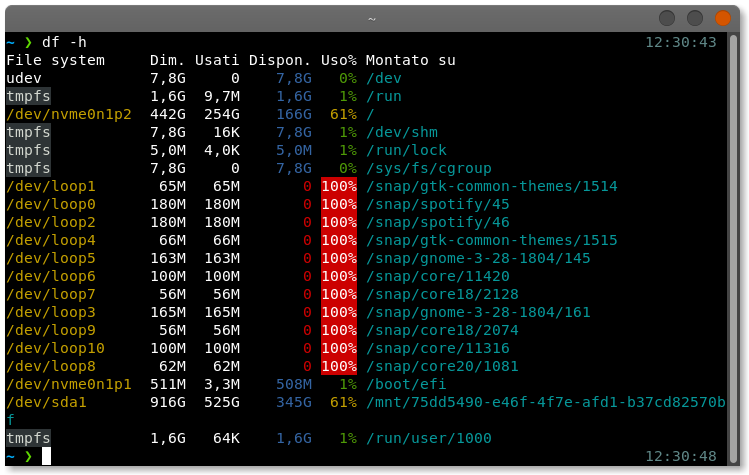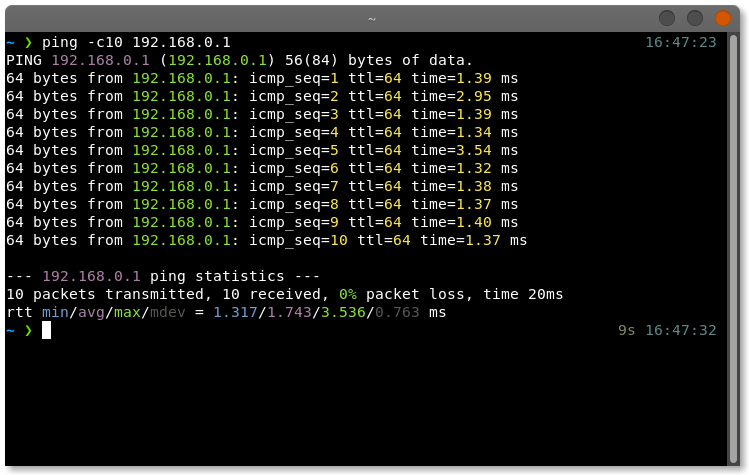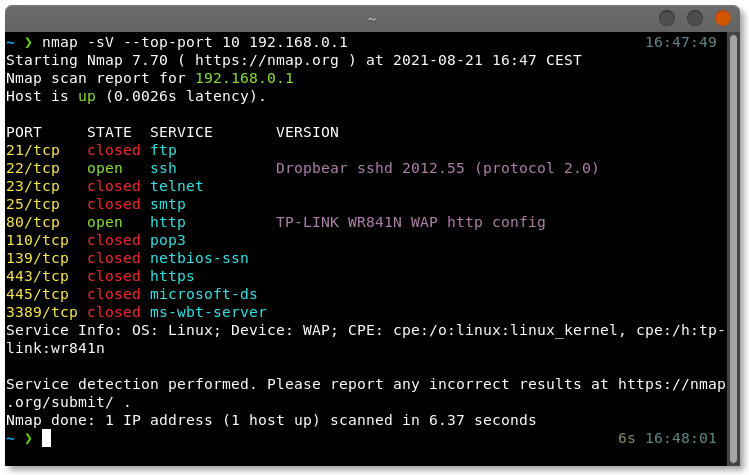Colorer is a simple and extensible text parsing command line utility that is intended to add color to commands that do not have it by default.
The command uses user's defined configuration files.
If Rust toolchain is installed, it is possible to install colorer by using cargo:
cargo install colorer # from crates.ioor, after cloning this repository, run:
cargo install --path .Another way to intall this program is to download the binary from the release page. There are multiple choices:
- download the binary and put it in the path (create the directory containing the color files manually)
- download the package (deb or rpm) and install it. This will also create the directory containing the configuration files.
The program searches for configuration files in /etc/colorer. This repository contains some basic configuration files available in color_patters directory.
To use colorer, pass the command to be runned as argument, for example:
colorer -- df -hThe files used to define a color scheme are simple TOML files named after the commads (e.g. ls.toml). A color scheme contains a command vector in which every component contains the following variables:
regex: the regex used to find the text. This value is mandatory.default decorator: it contains an array of colors. An array is used so it is possible to add a background color, a foreground color as well as a bold, italics. Also this value is mandatory.optionals_decorators: this value is optional and contains an array of alternative values for the string found with the regex. The elements are represented as a tuple where the first value contains a regex that searches for a pattern only on what has been found by the mandatory regex, and a list of decorators.
An example is given by the following snippet defined for df. This is used to highlight the usage represented as percentage.
[[command]]
regex = "(?<=(\\b(\\d+((\\.|\\,)\\d+)?(\\w+)?\\s+){3}))\\d+%" # main regex.
# This searches for all
# percentages
default_decorator = ["GreenFg"] # this is the default decorator and it is used
# if none of the optional decorators are used.
# By exclusion, for this example, it includes
# all the values from 0% up to 49%
optional_decorators = [
# the following regexs apply only for the text extracted by the main regex
[
"([5-7][0-9])%", # values from 50% up to 79%
["YellowFg"] # yellow text
],
[
"([8][0-9]|[9][0-6])%", # values from 80% up to 96%
["MagentaFg"] # magenta text
],
[
"([9][7-9]|100)%", # values above 97%
["RedBg"] # red backgroud
]
]It is possible to define color schemas for a command (df, ping, nmap) as well a for sub-commands (docker ps, docker search). For sub-commands definitions, replace command with subcommand.<subcommand>. For example, in case of docker search:
[[subcommand.search]]
regex = "(^[^NAME]\\w+(?=\\s)|(?<=(^\\w+\\/))\\S+)"
default_decorator = ["YellowFgBright", "Bold"]It is always a good idea to use double-dash if colorer is used to alias a command or when options are used.
For example, by defining ll='colorer ls -lahF', ll --help will print the help message from colorer. This problem can be avoided with ll='colorer -- ls -lahF'




